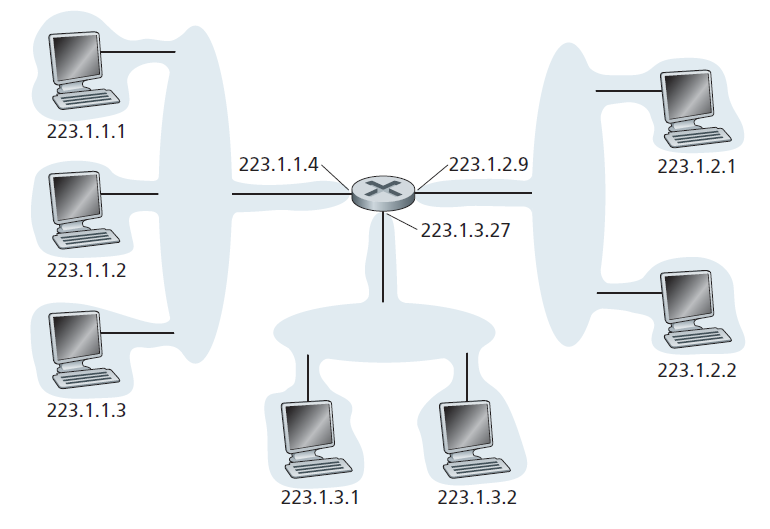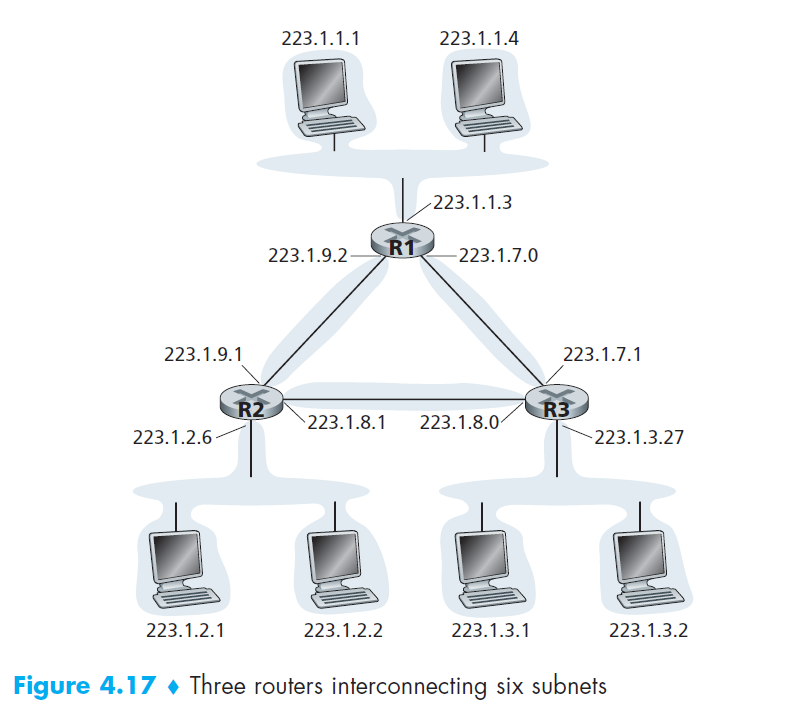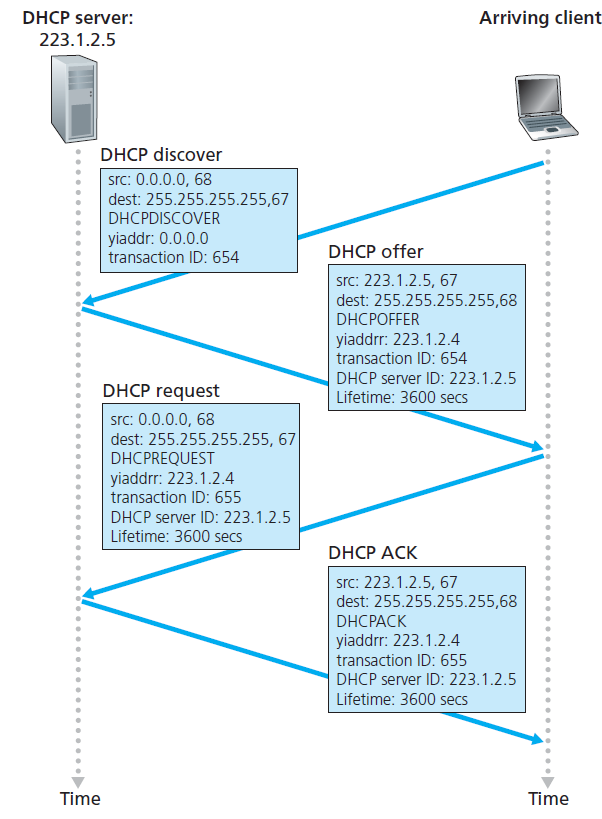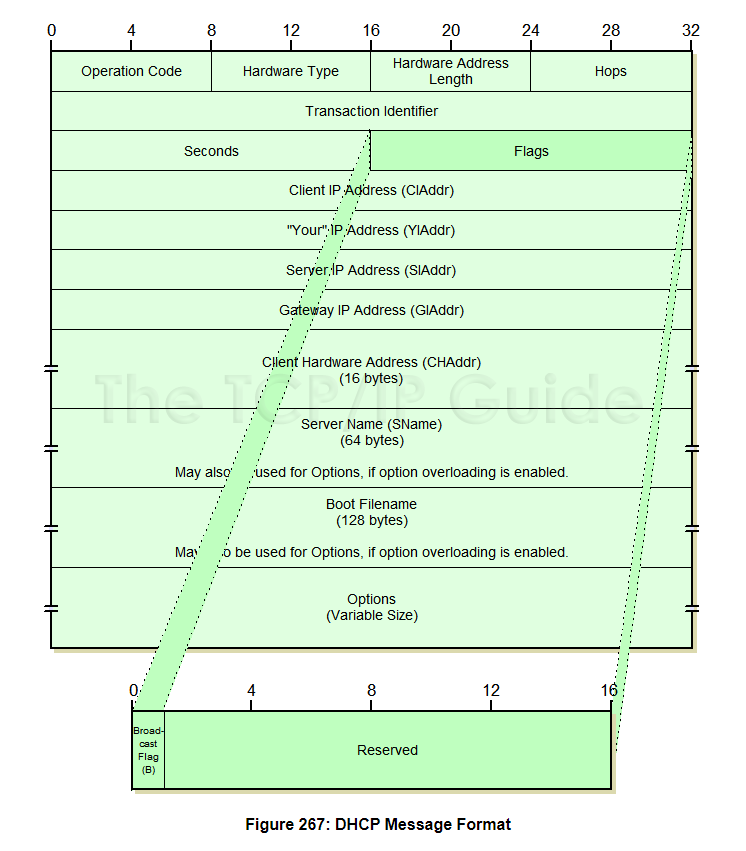The Embedded New Testament
The "Holy Bible" for embedded engineers
Project maintained by theEmbeddedGeorge Hosted on GitHub Pages — Theme by mattgraham
IPV4 addressing
Each IP address is 32 bits long (equivalently, 4 bytes), and there are thus a total of 232 possible IP addresses.
The boundary between the host and the physical link is called an interface. The boundary between the router and any one of its links is also called an interface. A router thus has multiple interfaces, one for each of its links. Because every host and router is capable of sending and receiving IP datagrams, IP requires each host and router interface to have its own IP address. Thus, an IP address is technically associated with an interface, rather than with the host or router containing that interface.

In IP terms, this network interconnecting three host interfaces and one router interface forms a subnet. IP addressing assigns an address to this subnet: 223.1.1.0/24, where the /24 notation, sometimes known as a subnet mask, indicates that the leftmost 24 bits of the 32-bit quantity define the subnet address.

The x most significant bits of an address of the form a.b.c.d/x constitute the network portion of the IP address, and are often referred to as the prefix (or network prefix) of the address.
Obatining a host address: the DHCP protocol
Host addresses can also be configured manually, but more often this task is now done using the Dynamic Host Configuration Protocol (DHCP)
DHCP allows a host to obtain (be allocated) an IP address automatically. In addition to host IP address assignment, DHCP also allows a host to learn additional information, such as its subnet mask, the address of its first-hop router (often called the default gateway), and the address of its local DNS server.
Because of DHCP’s ability to automate the network-related aspects of connecting a host into a network, it is often referred to as a plug-and-play protocol. As the hosts join and leave, the DHCP server needs to update its list of available IP addresses. Each time a host joins, the DHCP server allocates an arbitrary address from its current pool of available addresses; each time a host leaves, its address is returned to the pool.
DHCP is a client-server protocol. A client is typically a newly arriving host wanting to obtain network configuration information, including an IP address for itself.

For a newly arriving host, the DHCP protocol is a four-step process (DORA):
- DHCP server Discovery. The first task of a newly arriving host is to find a DHCP server with which to interact. This is done using a DHCP discover message, which a client sends within a UDP packet to port 67. The UDP packet is encapsulated in an IP datagram. The DHCP client creates an IP datagram containing its DHCP discover message along with the broadcast destination IP address of 255.255.255.255 and a “this host” source IP address of 0.0.0.0. The DHCP client passes the IP datagram to the link layer, which then broadcasts this frame to all nodes attached to the subnet.
- DHCP server Offer(s). A DHCP server receiving a DHCP discover message responds to the client with a DHCP offer message that is broadcast to all nodes on the subnet, again using the IP broadcast address of 255.255.255.255.
- DHCP Request. The newly arriving client will choose from among one or more server offers and respond to its selected offer with a DHCP request message, echoing back the configuration parameters.
- DHCP ACK. The server responds to the DHCP request message with a DHCP ACK message, confirming the requested parameters.

- DHCP Release And finally, If the host wants to move to other network or if it has finished its work, it sends the DHCPRELEASE packet to the server indicating that it wants to disconnect. Then the server marks the IP address as available in the storage so that it can be assigned to other machine.
DHCP message format

Here is a detailed explanation of DHCP packet fields
Reference
http://www.tcpipguide.com/free/t_DHCPMessageFormat.htm
https://www.geeksforgeeks.org/how-dhcp-server-dynamically-assigns-ip-address-to-a-host/
https://www.youtube.com/watch?v=k4t-NJrKLgM&ab_channel=HowTo